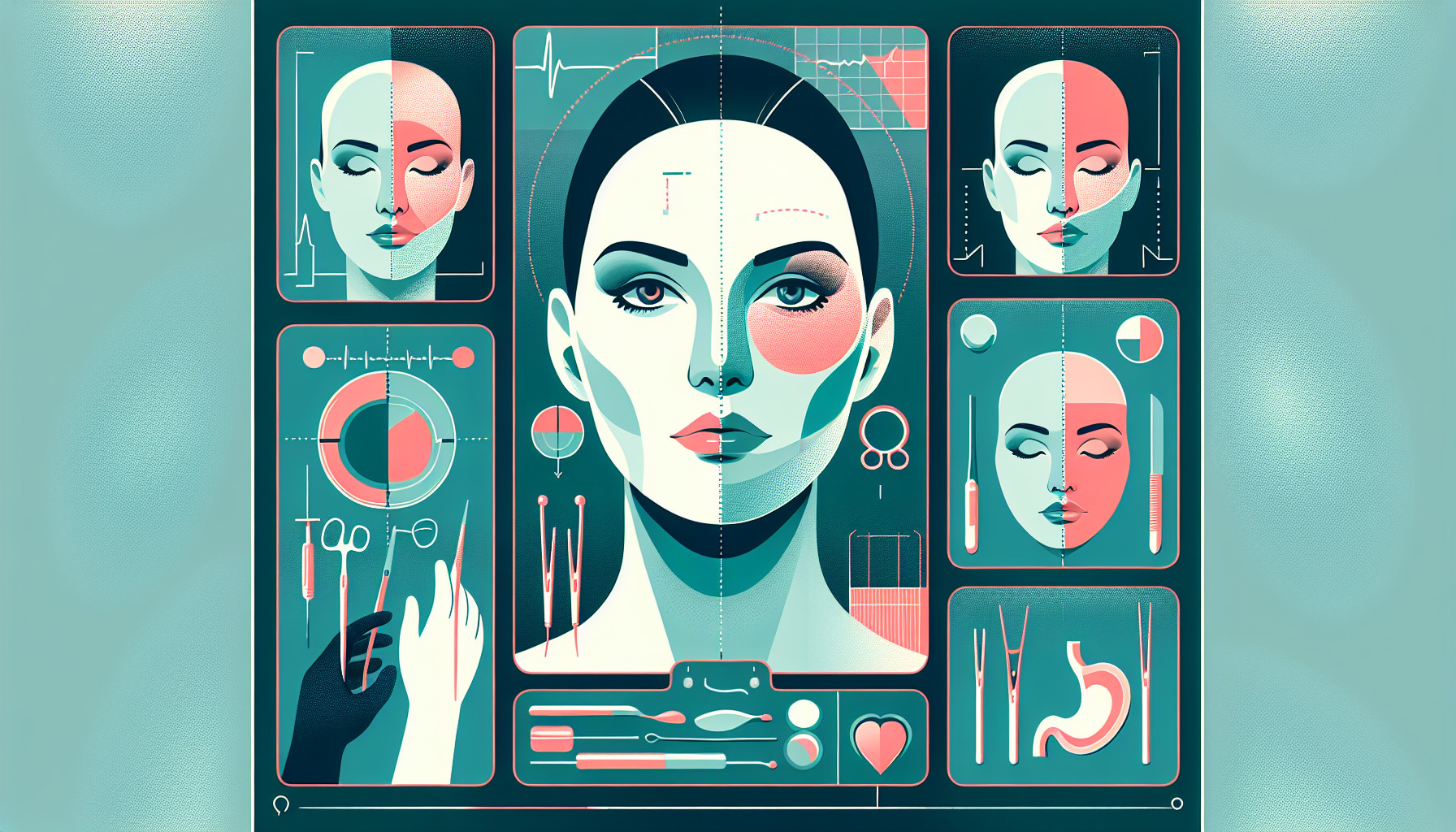Our Summary
This research paper discusses a condition called median craniofacial hypoplasia, where the middle parts of a person’s face and/or brain don’t develop fully. This can cause a variety of facial differences, and sometimes surgery is needed to correct these. Typical surgeries might include repairing a cleft lip and/or palate, reshaping the nose (rhinoplasty), or jaw surgery (orthognathic surgery). However, every patient is different, and their treatment needs to be tailored to them. The researchers discuss three patients with varying degrees of this condition, the surgeries they underwent, and how their treatment plans were decided. The researchers also suggest a general process for deciding on surgical treatment for this condition, taking into account each patient’s unique medical needs and situation.
FAQs
- What is median craniofacial hypoplasia and what kind of surgeries might be needed to correct it?
- How are individual treatment plans for patients with median craniofacial hypoplasia decided?
- What does the research paper suggest as a general process for deciding on surgical treatments for patients with this condition?
Doctor’s Tip
One helpful tip a doctor might tell a patient about craniofacial surgery is to make sure to follow all pre-operative and post-operative instructions carefully. This may include guidelines on medications, diet, activity restrictions, and wound care. Following these instructions can help ensure the best possible outcome from the surgery and promote a smooth recovery process. It is also important to communicate openly with your healthcare team about any concerns or questions you may have before, during, and after the surgery.
Suitable For
Patients who are typically recommended for craniofacial surgery include those with congenital craniofacial anomalies such as cleft lip and palate, craniosynostosis, microtia, and hemifacial microsomia. Patients with craniofacial trauma, tumors, or other acquired conditions affecting the skull and face may also benefit from craniofacial surgery.
Additionally, patients with facial asymmetry, malocclusion, or other functional issues related to the jaw or facial bones may be candidates for orthognathic surgery. Patients with severe facial deformities or disfigurements that impact their quality of life or psychological well-being may also be recommended for craniofacial surgery.
It is important for patients considering craniofacial surgery to undergo a thorough evaluation by a multidisciplinary team of specialists, including plastic surgeons, oral and maxillofacial surgeons, otolaryngologists, orthodontists, and speech therapists. This team can assess the patient’s unique needs and develop a comprehensive treatment plan that may include surgical and non-surgical interventions to achieve the best possible outcomes.
Timeline
Before craniofacial surgery:
- Patient consults with a craniofacial surgeon to discuss their condition and potential treatment options.
- Patient undergoes a series of medical tests and evaluations to determine the extent of their condition and the best course of treatment.
- Treatment plan is developed, taking into account the patient’s specific medical needs and goals for surgery.
- Patient undergoes pre-operative preparation, which may include counseling, physical therapy, and other interventions to prepare for surgery.
After craniofacial surgery:
- Patient undergoes surgery to correct their craniofacial condition, which may involve multiple procedures performed over several hours.
- Patient is monitored closely in the immediate post-operative period to ensure their safety and comfort.
- Patient may experience pain, swelling, and bruising in the days following surgery, which can be managed with medication and other interventions.
- Patient begins a period of recovery and rehabilitation, which may include physical therapy, speech therapy, and other interventions to help them adjust to their new facial structure.
- Patient attends follow-up appointments with their craniofacial surgeon to monitor their progress and address any concerns or complications that may arise.
- Patient continues to receive ongoing care and support as needed to ensure the best possible outcome from their craniofacial surgery.
What to Ask Your Doctor
- What specific craniofacial issues do I have and how will surgery address them?
- What are the potential risks and complications associated with craniofacial surgery?
- How will my recovery process look like and what kind of aftercare will be needed?
- Are there any alternative treatment options to surgery that I should consider?
- How many surgeries might I need and what is the timeline for them?
- What are the expected outcomes of the surgery in terms of appearance and function?
- Will I need any additional procedures or therapies after the surgery?
- How experienced are you in performing craniofacial surgeries and what is your success rate?
- Are there any lifestyle changes I should make before or after the surgery to ensure the best results?
- How will my insurance coverage work for these surgeries and what costs should I expect to incur?
Reference
Authors: Alba B, Harmon KA, La-Anyane O, Tragos C. Journal: J Craniofac Surg. 2025 Jan-Feb 01;36(1):237-240. doi: 10.1097/SCS.0000000000010774. Epub 2024 Oct 17. PMID: 39792874
